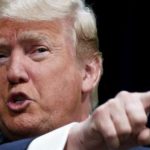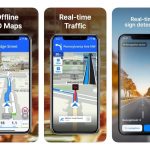Scott J. Engle/Reuters
- Lawmakers demanded answers Wednesday about a fatal Tesla crash after executives gave conflicting statements.
- Elon Musk said autopilot wasn’t on, but a top Tesla exec said adaptive cruise control, an autopilot feature, was.
- Rep. Kevin Brady and Sen. Richard Blumenthal criticized Tesla’s public statements about the crash.
- See more stories on Insider’s business page.
Lawmakers slammed Tesla’s public response to a deadly crash involving one of its Model S vehicles that killed two men near Houston, Texas, earlier this month following conflicting statements from the company’s executives.
“Despite early claims by #Tesla #ElonMusk, autopilot WAS engaged in tragic crash in The Woodlands. We need answers,” Rep. Kevin Brady, a Texas Republican, tweeted Wednesday.
Earlier on Wednesday, Sen. Richard Blumenthal, a Democrat from Connecticut, said he was “disappointed” that Musk weighed in publicly at all, given that two federal agencies still have ongoing investigations into the incident.
Tesla did not respond to a request for comment.
Local authorities said following the crash that neither of the bodies they recovered were in the driver’s seat, prompting questions about whether the vehicle’s “autopilot” system – a suite of AI-powered driver assistance features – was engaged when the vehicle crashed.
Two days after the crash, Tesla CEO Elon Musk tweeted that early data obtained from the Model S showed “autopilot was not enabled,” and he doubled down on those claims in Tesla’s earnings call Monday, contradicting local authorities.
But in that same call, Tesla vice president of vehicle engineering Lars Moravy said that the vehicle’s traffic-aware, or adaptive, cruise control – part of the autopilot system, according to Tesla’s Model S owner manual – was engaged during the crash.
“Our adaptive cruise control only engaged when the driver was buckled in above 5 miles per hour. And it only accelerated to 30 miles per hour with the distance before the car crashed,” Moravy said, adding that the feature also “disengaged the car slowly to complete to a stop when the driver’s seatbelt was unbuckled.”
Moravy also pushed back on Texas authorities’ statements that no one was driving the car when it crashed.
“Through further investigation of the vehicle and accident remains, we inspected the car with NTSB and NHTSA and the local police and were able to find that the steering wheel was indeed deformed,” he said, “leading to a likelihood that someone was in the driver’s seat at the time of the crash and all seatbelts post crash were found to be unbuckled.”
Despite misleading and unverified claims about the autopilot’s capabilities and possible safety advantages, the feature doesn’t make Tesla vehicles fully autonomous. At least three drivers have died while using Tesla’s Autopilot, and the National Transportation Safety Board has called for increased scrutiny of self-driving software.
Powered by WPeMatico






